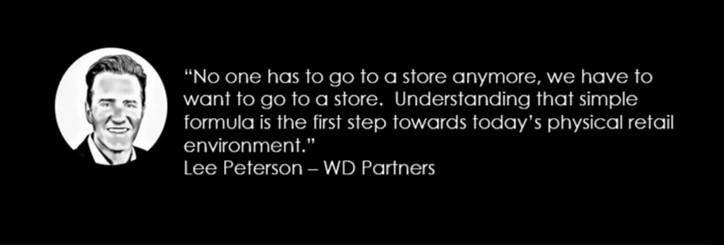The Strategic Uses of In-Store Customer Journey Measurement
The Strategic Uses of In-Store Customer Journey Measurement
By Gary Angel
|February 5, 2017

Store layout, promotion and staff optimization are the immediate and obvious ways to use the core data from customer journey analytics. Together, they comprise the “you” part of the equation – optimizing your operational and marketing strategies. But the uses of in-store tracking don’t end there. There’s tremendous strategic value in being to understand customer journeys – a lesson we’ve learned over and over again in digital. When it comes to omni-channel, store and experience design, and the integration of new technologies to the store, you simply can’t do the job right without in-store journey measurement.
Measuring the Customer Journey
The ability to measure customer journeys through physical spaces is new and deeply interesting. In a recent post, I described six primary use-cases for in-store measurement: store layout optimization, promotion planning and optimization, staff optimization, digital experience integration, omni-channel experience optimization, and customer strategy. Of these, half are focused on you – your store, your promotions and your staff. When you can measure the in-store customer journey better, you can optimize your marketing and operations more effectively and I already gave detailed explanations of each of these along with examples of the business questions they can answer. The other half of the equation is about the customer. Mapping customer segments, finding gaps in the experience, figuring out how omni-channel journeys work. This kind of data may have immediate tactical implications but it’s real function is strategic. When you understand the customer experience better you can design better stores, better marketing campaigns, and better omni-channel strategies.
Why Customer Journey Matters
I’m loathe to spend too much time on explaining why Customer Journey matters. It feels a bit like explaining why murder is wrong. If you have to explain, it’s already a problem! That being said, there are few broad brush points about physical retail in particular that I think are worth making with respect to customer journey. First, we live in a time of unparalleled disruption. Check out this deck from Christian Davies at Fitch with the catchy sub-title, “Retail will change more in the next 5 years than the last 50”. When you jump an order of magnitude in rate of change (and I think that’s plausible), you’re going to be challenged. Second, I think there’s a broad consensus that success in physical retail demands a new focus on experience. My recent webinar on Omni-Channel Analytics includes the quote from Lee Peterson that heads this post. It’s fundamental to understanding the need for in-store customer journey measurement.
There aren’t too many businesses that wouldn’t benefit from an increased focus on and understanding of the customer journey. For those of us who’ve grown up in digital optimization, that’s a core part of our worldview. But when you’re experiencing dramatic change in customer behaviors AND trying to build out new and innovative experiences, you have to understand what customers are doing and which parts of their experience work. Change is hard. Building new and different experiences is really hard. Nobody, and this is hard won wisdom from twenty years in analytics and optimization, EVER gets and experience right the first time. Nobody. Not the best design shop in the world. Not Steve Jobs on Adderall. Experiences always need to be measured and tuned, and the more complex the experience, the more optimization you’ll probably need before things work reasonably well.
Building Customer Journey Data
Most organizations already have core parts of the customer journey. Unless you’re seriously behind the times, most of the digital journey your customer’s take is already captured and integrated. If you have Loyalty programs or co-branded cards, you’ll likely be able to add at least the purchase part of the in-store experience to some of your customer journeys. In-store customer journey measurement (read this to get a detailed description of what this encompasses) fills in a huge gap for most organizations by adding detailed measurement of what your customer’s do in the store.
If you’re trying to integrate new store experiences, you need to know more than a store’s total point-of-sale figures. And the more you care about Lee Peterson’s simple idea of delivering an experience that “makes people want to come to the store”, the more important that additional knowledge becomes. In my next three posts, I’ll take a look at three different types of customer experience optimization and explain how in-store measurement can be used to plan, design, measure and tune each.